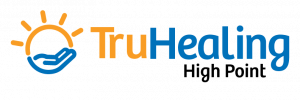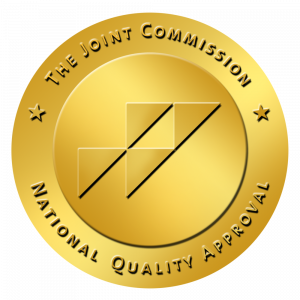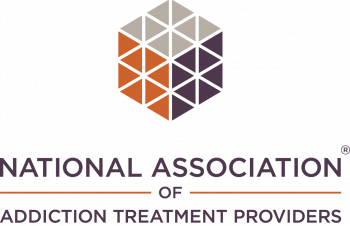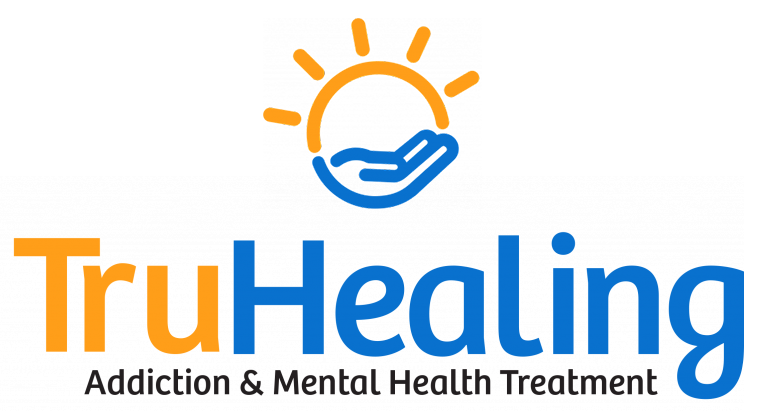Glossary of Addiction Terms
A
Abstinence:
Refraining from any drug or alcohol use.
Abuse:
Excessive use of a substance in a way that it was not meant to be used, or not as prescribed. Preferred terminology: misuse, harmful use, inappropriate use, hazardous use, problem use, risky use, substance use disorder.
Acetaminophens:
Pain relievers like Tylenol are used to alleviate mild to moderate pain and are typically purchased over the counter. These pills may be used to treat things like headaches, muscle aches, and fever.
Addict:
A slang term for a person who is addicted to a particular substance, typically an illegal drug. Preferred terminology: person with alcohol/drug disease, person with a substance use disorder, person experiencing an alcohol/drug problem, client or person receiving services, addiction survivor.
Addiction Assessment:
This is when a client is evaluated so they can be connected to the appropriate level of care, and their care team can understand the sociological, psychological, physical and other factors that contribute to their substance use. The first assessment is typically done over the phone and then another in-person assessment once the client admits.
Addiction:
A chronic, relapsing condition wherein a person uses substances or behaviors compulsively, despite its causing problems in their life Repetitive drug use can alter brain function in a way that enhances craving and decreases self-control.
Adverse Reaction:
An adverse drug reaction (ADR) is an unwanted and harmful effect caused by taking a drug. ADRs may occur following a single dose or from the combination of two or more drugs. An example of this would be when someone mixes alcohol while taking pills.
Affinity:
The strength at which a drug binds to the body’s receptor.
Age at Onset:
The age at which symptoms of a disease or addictive behavior began. This is a crucial factor in assessing an addiction.
Agonist:
A drug that activates a receptor in the brain. For instance, full opioid agonists bind to and activate the brain’s opioid receptors.
Alcoholics Anonymous (AA):
An international fellowship focused on abstinence-based recovery from alcoholism through its spiritually-inclined Twelve Step program. Members attend 12-step meetings and work through the steps with a sponsor.
Alkaloids:
Plant-produced organic compounds that have nitrogen in them. They are the active ingredients in many drugs, such as morphine, cocaine, nicotine, caffeine, and methamphetamine, as well as poisons like atropine and strychnine.
Amphetamine:
Typically used in the treatment of attention deficit hyperactivity disorder (ADHD), narcolepsy, and obesity, amphetamine is a central nervous system stimulant. It can be used legally as a prescription drug, or illegally without a prescription to get high. (Adderall is an example of a prescribed Amphetamine).
Analgesic:
An analgesic drug or painkiller is any drug used to relieve pain.
Antagonist:
A substance that can void other drugs’ effects. For instance, opioid antagonists like Naltrexone attach to the opioid receptors but do not activate them, which blocks opioids from producing any response in the body. It is the opposite of an opioid agonist.
AOD:
Stands for Alcohol and Other Drugs
AODA:
Stands for Alcohol and Other Drug Abuse
Aspirin:
A drug that is used to relieve pain, reduce fever, or lessen inflammation.
Assessment:
A professional evaluation of a person’s overall medical history, substance use history, current health status, and overall physical and mental health condition.
Average Length of Stay:
This represents the average time a client receives a particular service during a specified time period.
Axon:
Part of the neuron which sends signals to nearby neurons.
B
Barbiturate:
A drug that is a central nervous system depressant. They can produce a wide spectrum of effects, from mild sedation to total anesthesia. Treatment of barbiturate withdrawal is often an extended process of transitioning the client to a long-acting benzodiazepine (for example, Valium), followed by slowly tapering off the benzodiazepine. Amytal, Seconal, Butisolm Nembutal, Donnatal are all examples of Barbiturate drug brand names.
Benzodiazepine:
Benzodiazepines, also referred to as “benzos,” are a class of drugs that act tranquilizers. They are often prescribed to treat anxiety, insomnia, or seizures, but may be misused to get high. Brands: Xanax, Valium, Klonopin. (Street names: Xannies, bars, z-bars, zanbars, blue footballs, footballs.)
Binge Drinking:
Consuming many drinks in a short amount of time. The National Institute of Alcohol Abuse and Alcoholism defines it as drinking that brings a person’s blood alcohol concentration (BAC) to .08% or higher.
Bioavailability:
A drug’s ability to be absorbed by the body and take effect.
Biofeedback:
This is a mind-body therapy that helps people gain awareness of many physiological functions like heart rate, muscle tension, blood pressure, brain activity, etc. During a session, clients are hooked up to electrical sensors that help them understand their physiological reactions so that they can control certain responses; for instance, people can adjust their muscles to reduce pain or alter their breathing to impact their hear rate.
Biopsychosocial:
A clinical model that seeks to understand the biological, psychological, and social factors—and their complex interactions—that contribute to development, diseases, and mental health.
Blood Alcohol Level/Concentration:
The amount of alcohol in the blood after drinking. This is typically measured for legal and medical purposes.
Boundary:
The limits and rules we set for ourselves or others within a relationship.
Buprenorphine:
Medication is used to treat opioid addiction by reducing cravings and relieving symptoms of withdrawal such as agitation, nausea, and insomnia. (e.g., Subutex, Suboxone).
C
Caffeine:
Caffeine is a central nervous system stimulant. It acts as a diuretic and a stimulant (found in coffee, sodas, and teas).
Carcinogen:
Any substance that forms in living tissue and causes cancer. It is typically found in cigarettes.
Case Management:
This is a process by which a care team assists a client in arranging appointments, connecting to relevant resources, monitoring their healthcare plan, and more. The care team advocates for the client to receive appropriate medical care and other needed services.
Causal Factors:
Risk factors that may make an individual more likely to develop an addiction (e.g., conditioning, environment, genetics, repeated exposure etc.)
Ceiling Effect:
When a drug’s impact on the body plateaus. Taking more of the drug will not increase its effect.
Central Nervous System (CNS):
This consists of the brain and spinal cord and is one of two parts that make up the nervous system. The central nervous system coordinates body movements. It is through this system that we experience thoughts, feelings, and sensations
Chronic:
A chronic illness persists for a long time or consistently recurs. Many chronic illnesses are life-long but can be managed with treatment.
Cirrhosis:
Liver disease which is typically the result of alcoholism or hepatitis.
Clinical Decision Support:
A system that provides health care professionals, staff, clients, or other individuals with knowledge and person-specific information to enhance health and healthcare.
Clinical Opiate Withdrawal Scale (COWS):
A scale used to determine the severity of opioid withdrawal. This method consists of 11 topics, each including 4-5 common symptoms experienced by people in opiate withdrawal.
Cocaine:
A powerfully addictive drug used as a stimulant. (Street names: Coke, blow, rock, crack, yayo, snow, sniff, sneeze, white, nose candy, dust.)
Codeine:
Codeine is a drug derived from morphine used to treat pain. . It carries a high risk for addiction and dependence and can cause respiratory distress and death when taken in high doses or combined with other substances. Street Names (especially when combined with dextromethorphan): Lean, Sizzurp, Purple Drank.
Codependency:
A relationship that is codependent is one in which both people rely on each other in a way that is unhealthy. Typically, one person requires extra support due to an illness or addiction, and the other person spends an excessive amount of time taking care of them. Both feel dependent on one another.
Cognitive-behavioral therapy (CBT):
A type of therapy that helps people understand and change the negative thought processes that can lead to harmful behaviors.
Cold Turkey:
Abruptly quitting a drug that one is addicted to. It is recommended to gradually ease off a drug or use replacement medication, rather than go cold turkey. Going cold turkey from some drugs, like alcohol, benzodiazepines or barbiturates can result in fatal seizures in some instances.
Compulsion:
A psychological condition in which a person has difficulty controlling an urge to carry out a specific behavior, despite wanting to stop.
Continuum of Care:
A system in which a client moves through the various stages of treatment over time.
Craving:
A intense desire for something, usually a substance, that is difficult to control. It is also a symptom of abnormal brain adaptions that result from addiction.
Crisis Intervention:
Urgent and temporary care to individuals who are experiencing mental, emotional, mental, or physical distress.
Cross-Tolerance:
When a person’s tolerance for one drug results in tolerance to another, similar drug.
D
Drug Enforcement Administration (D.E.A.):
A United States federal law enforcement agency, under the U.S. Department of Justice, responsible for combating drug trafficking and distribution within the U.S. www.dea.gov
Drug of Choice (D.O.C):
The drugs that a person is currently struggling with or tends to prefer in their addiction.
Denial:
The failure to either admit or realize one’s addiction or mental health disorder, or to recognize and accept the harm it can or has caused.
Dependence:
Relying on alcohol or drugs to feel physically okay or to not feel sick.
Depressants:
A sedative that acts on the Central Nervous System and slows the rate of the body’s functions. Depressants are also occasionally referred to as “downers.”.
Depression:
A mental health disorder characterized by persistent and intense sadness or loss of interest in activities, causing significant impairment in daily life. It is very common for depression and addiction to co-occur.
Detoxification (Detox):
The process of gradually removing a substance from the body with the help of medical professionals. The goal is to keep the person safe and minimize withdrawal symptoms.
Discharge:
The formal termination of treatment when it has been completed or due to administrative authority.
Disease Model:
According to the disease model, addiction is a brain disease caused by biological, neurological, genetic, and environmental factors.
Disease:
A condition featuring medically significant and specific symptoms.
Doctor-shopping:
The practice of going from one medical professional to another to obtain multiple prescriptions of a controlled substance. This is a common practice for people with substance use disorders. Systems like Florida’s E-FORSCE which track controlled substance prescriptions are successfully thwarting the practice in states which require their use.
Dopamine:
A neurotransmitter found in the brain that motivates people to repeat a behavior deemed pleasurable. The brain includes several distinct dopamine pathways, one of which plays a role in reward-motivated behavior.
Drug Misuse:
Using a drug not as prescribed or in a way that goes against legal or medical guidelines. This typically puts the person using the drug in danger.
Drug Tolerance:
Drug tolerance, also referred to as drug insensitivity, is when the body adapts to a drug following its repeated use, lessening its effects. Increasing the dosage may strengthen the drug’s effects; however, it also may accelerate tolerance, further reducing the drug’s effectiveness.
DSM:
The Diagnostic and Statistical Manual of Mental Disorders (DSM) is the handbook that is the standard for diagnosing mental health disorders. It is written by the American Psychiatric Association and was first published in 1952, with new volumes being regularly released as added information becomes available. The most recent version, the DSM-5-TR, was published in March 2022.
Dual-Diagnosis:
Dual diagnosis, also referred to as co-occurring disorder or comorbidity, is the condition of having a mental illness along with a substance use disorder.
Driving under the Influence (DUI):
The act of driving a vehicle while intoxicated to a level that renders the driver incapable of operating a motor vehicle.
DWI:
Stands for driving while intoxicated. Another name for DUI.
Dysphoria:
A state of feeling intensely uneasy or dissatisfied with life. The opposite of euphoria.
E
Ecstasy (MDMA):
A psychoactive drug primarily used for recreational purposes for hallucinogenic and stimulant effects. The desired feelings include altered sensations and increased energy, empathy, and pleasure. (Street names: Molly, rolls, love drug, lovers speed, beans, happy pill, candy, uppers.)
Enabling:
In addiction and mental health, enabling has both a positive connotation of empowering individuals and a negative sense of encouraging dysfunctional behavior. In addiction it typically refers to dysfunctional behavior; for example, helping an addicted person do things they can or should be doing for themselves, which makes them less likely to understand the impact of their addiction.
Endogenous Opioid:
The opioids released naturally by neurons in the brain that circulate throughout all organ systems in the body to help us tolerate pain. Endorphins are one example.
Endorphins:
Endorphins are endogenous opioid neuropeptides and peptide hormones in humans and other animals that can reduce pain and bring a sense of well-being.
Ethanol:
Ethanol, also called alcohol, ethyl alcohol, and drinking alcohol, is the intoxicating ingredient in alcoholic beverages.
Euphoria:
A feeling of elation or an extreme, unrealistic sense of feeling “high.”
Evidence-based Treatment (EBT):
Scientifically backed treatment in which extensive research has been documented and the treatment has been proven successful. The goal of EBT is to encourage the use of safe and effective treatments likely to achieve results and lessen the use of unproven, potentially unsafe treatments.
Excipient:
An inactive substance added to a drug to help bind the active ingredient. For example, gum Arabic or starch.
F
Fentanyl:
A powerful synthetic opioid drug used in the treatment of severe pain. This drug is 50-100 times stronger than morphine. Street Names: China White, Friend, Jackpot, TNT.
Fetal Alcohol Syndrome (FAS):
A congenital syndrome causing birth defects/abnormalities in babies. It is caused by excessive alcohol use during pregnancy.
Fetal Alcohol Spectrum Disorders (FASD):
A group of conditions that can occur in a person who was exposed to alcohol before birth. These include Fetal Alcohol Syndrome (FAS), Alcohol-related Neurodevelopmental Disorder (ARND), Alcohol-related birth defects (ARBD) and Neurobehavioral Disorder associated with prenatal alcohol exposure (ND-PAE).
Food and Drug Administration (FDA):
A federal agency of the Department of Health and Human Services that administers federal laws regarding substances and protects public health.
G
Gender:
The socially constructed roles, expressions and identities of women, men, and gender-diverse people.
GHB (Gamma-hydroxybutyrate):
GHB is a CNS depressant and drug of abuse also known to be used commonly as a “date rape” drug because it can cloud awareness and memory at higher doses. GHB usually comes as a colorless, odorless, bitter or salty liquid, often sold in small bottles or vials.
H
HIPAA:
Health Insurance Portability and Accountability Act. www.HIPAA.gov
Habit:
Also, an outdated term for addiction/physical dependence.
Hallucinations:
A perception of having seen, heard, touched, tasted, or smelled something that was not there. Hallucinations can have causes that are not due to underlying disease. Examples include drug intoxication.
Hallucinogen:
A psychoactive drug that can produce altered states of consciousness and distort perceptions, sometimes resulting in delusions or hallucinations. The common types of hallucinogens are psychedelics, dissociative, and deliriants.
Harm Reduction:
Harm reduction, or harm minimization, reduces the negative consequences of a person’s behavior, most commonly those associated with drug use. Examples include lowering the risk of transmitting disease during intravenous drug use, providing overdose education, and offering overdose-reversing medication. According to the Substance Abuse and Mental Health Services Administration (SAMHSA), “it plays a significant role in preventing drug-related deaths and offering access to healthcare, social services, and treatment.”
Health Care system:
Providers, institutions, and resources that deliver health care services.
Heavy Drinking:
CDC defines Heavy Drinking as consuming 8 or more drinks per week for women, and 15 or more drunks per week for men. The Substance Abuse and Mental Health Services Administration (SAMHSA) defines binge drinking as having consumed 5 or more days in the past 30 days.
Hepatitis:
An inflammation of the liver. Hepatitis can be caused by infections with various organisms, including bacteria, viruses (Hepatitis A, B, C, etc.) or parasites. Chemical toxins such as alcohol, drugs, or poisonous mushrooms can also damage the liver and cause it to become inflamed. Hepatitis may resolve quickly (acute hepatitis) or cause long-term disease (chronic hepatitis). In some instances, progressive liver damage or liver failure may result.
Heroin:
A highly addictive opioid used for its euphoric effects. It can be injected, smoked, snorted, or inhaled. (Street Names: Smack, Dope, China White, Horse, Skag, Junk, Black Tar, Mud, Thunder, Skunk.)
Hydrocodone:
An opioid narcotic analgesic was first developed as a medication to treat moderate to severe pain and cough. It is made from codeine and binds to opioid receptors in the central nervous system. (Street Names: Vike, Watsons, Vics, Vicos, Hydros, Lorris, Fluff, Scratch, Norco, Tabs.)
Hydromorphone:
A controlled substance used to treat moderate to severe pain. Also known as Dilaudid. (Street Names: D, Dillies, Footballs, Juice, Smack.)
I
Impulsivity:
A problem with emotional or behavioral self-control
Inhalants:
A broad range of household and industrial chemicals whose volatile vapors or pressurized gases can be concentrated and breathed in via the nose or mouth to produce an immediate high. Solvents: paint thinners, dry-cleaning fluids, gasoline, lighter fluid, felt tip marker fluid, glue. Aerosols: spray paints, hair and deodorant sprays, aerosol computer cleaning products, vegetable oil sprays. Gases: butane lighters, propane tanks, whipped cream aerosols, ether, chloroform, nitrous oxide. Nitrites: video head cleaner, room deodorizer, leather cleaner, liquid aroma.
Inpatient Treatment:
Intensive, 24-hour-a-day services where clients remain at a medical facility overnight.
Intervention:
The act of confronting a problem in someone else’s life in the hopes of creating positive change.
Intoxication:
A state of being drugged or poisoned resulting from abuse of alcohol or drugs, significantly reducing physical or mental control.
Intranasal:
Administered through the nasal passage
K
Ketamine:
A synthetic compound used as an anesthetic and analgesic drug, or illicitly as a hallucinogen. Also increasingly used under professional supervision as part of treatment for depression or other mental health disorders. (Street names: K, Special K, Vitamin K.)
Kratom:
A tree native to Southeast Asia that can produce opioid or stimulant-like effects depending on the dose. (Street names: Herbal Speedball, Biak-biak, Ketum Kahuam, Ithang, Thom.)
L
LSD:
Also known as lysergic acid diethylamide, it is a synthetic and potent hallucinogenic drug. (Street names: Acid, lucy, lucy in the sky with diamonds, tabs, doses.)
Legal Drugs:
Drugs that can be legally bought and sold, sometimes with restrictions such as being of legal age. Examples include alcohol, caffeine, carbohydrates, nicotine, etc.
Levels of care (LOC):
The intensity of services required to meet a person’s mental health or addiction recovery needs.
Limbic System:
Emotional control center of the brain.
M
Maintenance:
Monitoring of a client who is taking psychotropic medication indefinitely to ensure the drug is still effective.
Maintenance Medications:
Medications prescribed for chronic, long-term conditions and that are taken on a regular basis.
Marijuana:
A psychoactive drug from the cannabis plant that has been used for both recreational and therapeutic purposes and in various traditional medicines for centuries.
Medicated Assisted Treatment (MAT):
The use of medications such as Suboxone or Vivitrol, often in combination with counseling and behavioral therapies, to help reduce cravings and lessen withdrawal symptoms for people with opioid or alcohol use disorder. This can help people sustain recovery.
Meperidine:
An opioid analgesic, also known as Demerol, is used as a painkiller.
Mescaline or Peyote:
A naturally occurring hallucinogenic or psychedelic drug producing altered thinking.
Metabolism (of drugs):
The chemical and physical reactions carried out by the body in response to ingesting a drug.
Methadone:
Methadone is a synthetic analgesic drug that has an effect like morphine but is longer acting. It can be used as a medication-assisted treatment for opioid addiction.
Methamphetamine:
Methamphetamine, also known as meth, is a very addictive stimulant drug. It is a powder that can be made into a pill or rock, eaten, snorted up the nose, or mixed with liquid and injected into the body with a needle. (Street names: Crystal, meth, tina, crank, tweak, ice, speed.)
Methylphenidate:
A mild central nervous stimulant used to treat ADHD, and occasionally narcolepsy (e.g. Ritalin)
Monotherapy:
Therapy using one drug to treat a certain disease or condition.
Morphine:
Morphine is a pain medication that binds to the opioid receptors in the central nervous system. It can cause an elevated risk for addiction and dependence. It can also cause respiratory distress and death when taken in high doses or when combined with other substances.
Mushrooms or Psilocybin:
A psychedelic drug naturally occurs in certain mushrooms. Consuming them may cause hallucinations and changes in perception, mood and thought.
Naloxone:
A synthetic drug that blocks opiate receptors in the nervous system, reversing an opioid overdose It is sold under the brand name Narcan, an opioid reversal medication It is also used in combination with Buprenorphine (common brand name Suboxone) to discourage people from injecting the Buprenorphine, as the Naloxone would send a person into immediate withdrawal.
Naltrexone:
A synthetic drug that blocks opiate receptors in the nervous system and is used to treat opioid or alcohol addiction. It helps block the effects of opioids and decrease cravings for both opioids and alcohol.
Narcan:
See Naloxone
Narcotic:
Any drug that blunts the senses and produces changes in mood. Narcotics are typically used for nonmedical purposes, especially when sold illegally.
National Board of Addiction Examiners (NBAE):
Provides certification for professionals working in the addiction field.
Narcotics Anonymous (NA):
An international fellowship based off the principles on Alcoholics Anonymous focused on abstinence-based recovery from drugs. Members attend 12-step meetings and work through the steps with a sponsor. NA is the second-largest 12-step organization.
Negative Reinforcement:
A method of removing an unpleasant stimulus if a desired behavior is displayed to reinforce that behavior.
Neurotransmitter:
Endogenous chemicals in the nervous system allow neurons to communicate with each other and influence mood, heart rate, muscle movement, and many other functions.
Nicotine:
Tobacco’s toxic main active ingredient. It acts as a stimulant in small doses. Over time, smoking can cause health issues in most organs and systems in the body.
Nitrous Oxide:
A popular inhalant, which can be found in whipped cream dispensers and other products, causes feelings of exhilaration. Also known as “laughing gas,” it can cause fits of uncontrollable laughter. However, it has serious health risks if taken too much or over a longer period, including memory loss, confusion, psychosis, loss of oxygen,
Nonopioid:
A drug that does not activate opioid receptors but is used to treat pain. Examples aspirin and ibuprofen.
O
Obsession:
An idea or thought that continually preoccupies or intrudes on a person’s mind. (e.g., needing an alcoholic drink).
Off-Label Use:
Physician-approved use of a drug for conditions other than those stated on its label.
Opiate:
A drug that comes directly from poppy plants, and is derived from or related to opium.
Opioids:
Opium’s synthetic form.
Opioid Treatment Program (OTP):
A program or practitioner that treats individuals with an opioid agonist medication.
Opium:
An opioid naturally produced in poppy plants that can be used in medicine as an analgesic or as an addictive narcotic.
Outpatient Treatment:
Treatment that does not require the client to stay overnight.
Over-the-Counter Drugs:
Legal non-prescription drugs.
Oxycodone:
A drug made from morphine and that is like morphine in its effects. It can be used as medicine to relieve moderate to severe pain or as a narcotic that is highly addictive. Also known as Oxycontin, Percodan, Percocet. (Street names: O.C., Oxycet, Oxycotton, Oxy, Percs, O, Kickers, Blues.)
Oxymorphone:
A drug that changes the way the body responds to pain. It can also help anesthesia work better during surgery or misused as a narcotic.
P
Painkillers:
A drug or a medicine for relieving pain, including opioids and nonopioids. Most often used to refer to opioids however.
Partial Agonists:
Drugs that bind to and activate certain receptors, but to a lesser degree than full agonists.
Peer Support:
Structured relationships in which people meet to provide or exchange emotional support with others facing similar challenges. The group does not necessarily need to have healthcare providers among its members. Examples of peer-to-peer groups are AA, NA, SMART Recovery, and online forums. Peer support by itself does not constitute treatment but is one of many tools that make up a treatment plan. It should be used in conjunction with professional therapy and/or medication as part of a comprehensive treatment plan.
Pharmacology:
The study of the uses of drugs and their effects on the body. This includes drug origin, composition, pharmacokinetics, therapeutic use, and toxicology.
Phencyclidine (PCP):
A dissociative hallucinogenic drug. PCP may cause a trance-like state, hallucinations, distorted perceptions of sounds, and violent behavior. (Street names: Angel dust, ozone, rocket fuel, superweed, wack, wet.)
Physical Dependence:
When a person comes to rely on a certain substance to feel okay following repeated use. Over time, unpleasant physical symptoms occur if the drug is suddenly stopped or taken in smaller doses.
Pink Cloud:
A stage some people go through in early addiction recovery wherein they feel sense of euphoria and relief. It typically happens within the first few weeks after quitting substance use, lasting no longer than a year.
Placebo:
A substance with no pharmacological elements that may elicit a reaction because of a client’s belief in its effects. Used as a control in testing new drugs.
Polysubstance Abuse:
Abuse of more than one substance at a time.
Post-Acute Withdrawal Syndrome (PAWS):
Withdrawal symptoms that occur 1-2 weeks or even months after initial acute withdrawal. Some symptoms include mood swings, insomnia, anxiety, depression, and irritability.
Precipitated Withdrawal Syndrome:
Rapid and intense withdrawal symptoms triggered by medication. The most common example is when someone takes NARCAN to reverse an overdose or takes Suboxone prematurely before they have had sufficient natural withdrawal symptoms to warrant it’s use and get the desired relief.
Pre-Existing Condition:
A medical condition exists at a time when a person applies for insurance. Typically, the cost of treating this condition is not covered by insurance.
Prescription Drugs:
Drugs that are only available by a physician’s order.
Prescription Drug Misuse:
Any use of a prescription drug in a way not directed by the prescribing physician, such as taking it more often than prescribed or using another person’s prescription.
Prior Authorization:
The approval a provider must obtain from an insurer before carrying out certain health services for the service to be covered under the plan.
Psychedelic Drugs:
A class of drugs that produce altered states, hallucinations, or changes in perception and cognitive processes. Examples are LSD or acid, psilocybin mushrooms, and mescaline, the active constituent of peyote.
Psychoactive Drug:
Any drug that impacts mental processes, perception, mood, consciousness, or behavior.
Psychoanalysis:
A type of therapy that focuses on a person’s feelings and past to help investigate the interaction of conscious and unconscious elements in the mind.
Psychological Dependence:
Being dependent on a substance to feel emotionally or mentally okay, such as to stave off the anxiety or anhedonia (loss of pleasure in activities once enjoyed) that might come when substance use is stopped.
Psychopharmacology:
The study of how drugs affect consciousness, mood, sensation, thinking, and behavior.
Psychotropic Drug:
Any drug that impacts the mind, emotions, mood, or behavior. Typically used to describe medications for mental health disorders.
R
Receptor:
Protein on a target cell’s membrane or cytoplasm that a particular drug binds to, and that mediates the body’s response.
Recidivism:
The likelihood of a person relapsing or returning to a negative behavior (e.g., drug use, criminal activity).
Recovery Rates:
The percentage of addicted people undergoing treatment who continue to partake in abstinence or recovery over time.
Recovery:
The process of healing from a mental health or substance use disorder. This is a process of change through which individuals improve their health and wellness, live a self-directed life, and strive to reach their full potential.
Relapse Prevention Plan:
A relapse prevention plan is simply a plan for how you can prevent a relapse after a period of abstinence. It typically involves identifying triggers and how you will deal with them, figuring out the coping skills you will use to deal with stress, and other helpful ways to set you up for success in recovery.
Relapse:
Using drugs or alcohol again after a period of sobriety. While a lapse is a brief slip, a relapse is a full return to drinking and/or using drugs.
Remission:
A symptom-free, temporary break from disease or pain.
Residential Treatment:
Intensive, 24-hour a day services delivered in settings other than a hospital.
Respiratory Depression:
The slowing or cessation of one’s breathing, sometimes associated with opioids use. This is the actual cause of death from an opioid overdose.
Reverse Tolerance:
When a lower dose of a substance produces the same desired effect that previously resulted only from higher dosages. This occurs when the liver no longer produces the necessary enzymes to break down the substance. Only those with liver damage will experience reverse tolerance.
Risk Factors:
Biological, social, mental, and emotional factors that increase the likelihood of a person starting to use substances, engaging in regular and harmful use, and experiencing other behavioral health problems associated with use.
Route of Administration:
The path in which a drug, fluid, or other substance enters the body, such as by mouth or injection.
S
Salvia:
Salvia divinorum is a plant species that has psychoactive properties when its leaves are consumed by chewing, smoking, or drinking as a tea. The leaves contain opioid-like compounds that induce typically short-lived, intense and often disturbing hallucinations.
Screening:
Evaluating whether a person has a substance use disorder and to what extent (e.g., self-completion questionnaire/life-history assessment).
Self-help:
The act of helping or improving yourself without relying on anyone else.
Serotonin:
A neurotransmitter that contributes to wellbeing and happiness.
Side Effects:
Secondary effects of a drug; these are usually undesirable.
Steroids:
A steroid are drugs used for anti-inflammatory purposes that can also be misused to increase muscle mass.= Examples include the dietary lipid cholesterol, the sex hormones estradiol and testosterone and the anti-inflammatory drug dexamethasone.
Stigma:
A strong feeling of disapproval and prejudice about a particular group, condition, or quality based on societal ideas.
Stimulant:
A class of drugs that act on the Central Nervous System causing an increase in activity and resulting in alertness, excitement, and wakefulness. This gives the body a feeling of pleasure and invigoration.
Sublingual:
Drugs that enter the blood through the membranes under the tongue.
Suboxone:
Suboxone contains a combination of buprenorphine and naloxone and is used to treat addiction as part of medication-assisted treatment. It can help reduce cravings and withdrawal symptoms
Substance Abuse:
Substance abuse is the use of alcohol or drugs in a way that causes consequences in the person’s life, such as physical, social, or emotional issues.
Synergism:
The effect that results when a person takes more than one medication simultaneously.
Synthetic:
A substance that is not naturally occurring and made by chemical synthesis. Typically, this process is done to imitate the effects of a natural substance.
T
Talc:
A dangerous substance used in manufacturing pharmaceuticals, especially in making talcum powder.
Telehealth:
Healthcare delivered remotely. This is done through electronic health records, mobile applications, and web-based tools to support the delivery of health care, health education, or other health-related services and functions.
Telemedicine:
Two-way, real-time communication between a client and a health care professional at a distant site. Telemedicine is a subcategory of telehealth.
Therapeutic Community:
A group-based approach to long-term mental health disorders, personality disorders and addiction, done under the supervision of clinical staff but in a non-clinical setting
Titration:
The gradual adjustment of the amount of a medication dose.
Tolerance:
The capacity to continue using drugs at a set amount without having adverse reactions or feeling intense effects. Tolerance builds with continued use of a substance.
Toxicity:
The degree to which a chemical substance can harm or poison one’s body.
Tranquilizers:
A type of drug that can help relieve the symptoms of severe psychosis, tension, or anxiety.
Trigger:
A circumstance, sound, image, or any other stimulus that causes feelings of trauma. Triggers are usually an internal or external stimulus that causes a person in recovery to want to use drugs or alcohol again.
Twelve (12) Step Program:
A fellowship of people in recovery from substance abuse, behavioral addictions, traumatic experiences, and compulsions. People in 12-step programs work through the steps with a sponsor, share their stories, and support one another in recovery.
U
Up or Uppers:
Also known as stimulants, this type of drug produces a euphoric effect.
Urge-Peak Cycle:
Unpredictable and strong cravings for a substance resulting from brain changes caused by addiction.
Urges:
A strong craving and impulse to satisfy that craving.
W
Withdrawal:
Withdrawal is a psychological and biochemical process that occurs in the first few hours to days after a person stops using a chemical substance or stops an addictive behavior. For example, opioid withdrawal symptoms may include watery eyes, loss of appetite, panic, insomnia, vomiting, irritability, jitters, shakes, seizures, hallucinations, depression, or fatigue.








